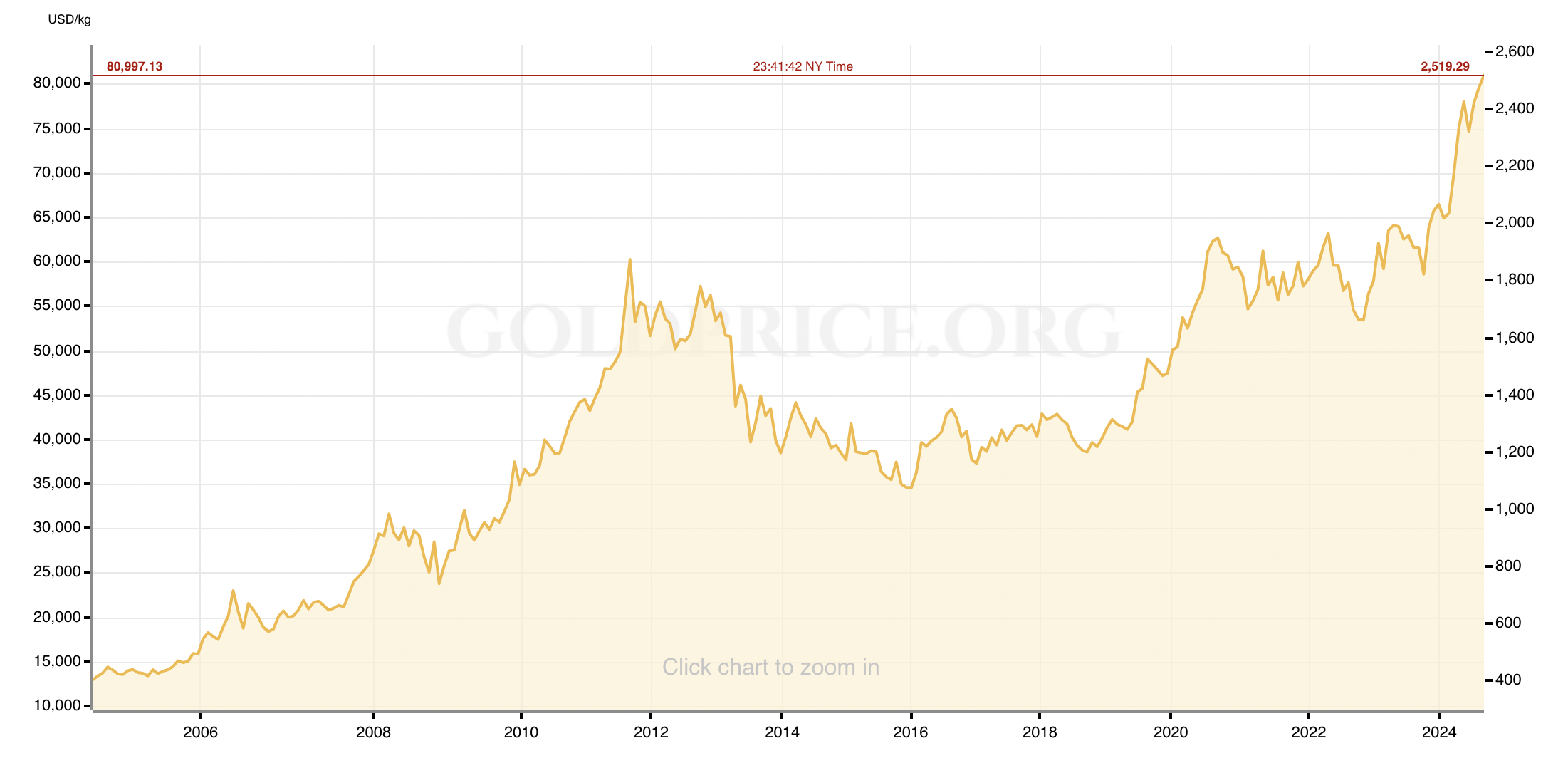History of gold
In this article, Nithisha CHALLA (ESSEC Business School, Grande Ecole Program – Master in Management (MiM), 2021-2024) covers the role of gold in ancient economies, the impact of gold inflows, the establishment and decline of the gold standard, and gold’s modern function as a haven and investment asset.
Introduction
Gold has been used since prehistoric times for ornaments, jewelry, and religious artifacts. Its lustrous appeal and malleability made it a symbol of wealth and power in ancient civilizations such as Egypt, Mesopotamia, and the Indus Valley. The Egyptians were among the first to extract gold and used it extensively for jewelry, burial masks, and other artifacts. Ancient Greece and Rome civilizations used gold coins for trade, symbolizing wealth and stability. During the Middle Ages, gold became central in European economies. And further exploration began all over the world in the quest for trade, standards, and currencies.
Ancient beginnings and the economic role of gold
As we know its lustrous appeal and malleability made it a symbol of wealth and power in ancient civilizations, gold was used as a currency in ancient civilizations.
Gold as a currency in ancient civilizations
Gold’s role as a medium of exchange dates back to the Lydians in the 6th century BC called “Lydian Coinage”, who is credited with minting the first gold coins. These coins became a standardized form of currency, facilitating trade and economic stability across the Mediterranean.
Ancient golden coins

Source: Gold RSSP
Later, ancient Egypt accumulated vast amounts of gold, which played a crucial role in their economy. Gold was used as a form of tribute, tax, and savings, solidifying its status as a store of value. The discovery of extensive gold mines in Nubia (modern-day Sudan) significantly contributed to Egypt’s wealth and power.
Economic power in classical and medieval times
Gold was central to the Greek and Roman economies. The Romans established a gold standard with the aureus, a widely circulated gold coin. This coinage system underpinned the economic stability of the Roman empire, and its collapse led to economic fragmentation in medieval Europe.
The Byzantine Empire’s solidus, a gold coin, maintained its value for centuries, reflecting the empire’s economic strength. Its stability and acceptance across Europe and the Middle East reinforced gold’s status as a reliable currency.
The Age of Exploration and Economic Expansion
Gold influx from the Spanish empire
The Spanish conquest of the Americas in the 16th century led to an unprecedented influx of gold into Europe. The capture of Aztec and Inca treasures, along with extensive mining operations in Mexico and Peru, flooded Spain with gold, significantly influencing the European economy.
This massive influx of gold contributed to the “Price Revolution” in Europe, where prices of goods and services increased substantially. This inflationary period marked a significant shift in the European economy, redistributing wealth and leading to economic and social disturbances.
African gold and trans-Saharan trade
Mansa Musa’s pilgrimage to Mecca in 1324, during which he distributed enormous quantities of gold, highlights the economic power of the Mali Empire. His lavish spending caused temporary inflation in regions he visited, underscoring gold’s influence on local economies.
Gold from West Africa was pivotal in the trans-Saharan trade, linking African economies with those of the Mediterranean and the Middle East. This trade network also facilitated the exchange of slaves, further intertwining gold with the global economy.
Modern era: Gold’s financial evolution
The Gold Standard
The gold standard emerged in the 19th century, linking national currencies to a specific amount of gold. Britain adopted it in 1821, followed by other major economies. The gold standard facilitated international trade by providing a stable exchange rate system.
According to the World Gold Council, the U.S. formally adopted the gold standard in 1900 with the Gold Standard Act, pegging the dollar to gold at $20.67 per ounce. And it explicitly states “An act to define and fix the standard of value, to maintain the parity of all forms of money issued or coined by the United States, to refund the public debt, and for other purposes”. This provided economic stability but also tied monetary policy to gold reserves, limiting the ability to respond to economic crises.
According to Lennard and Paker (2024) who published in CEPR, the rigid adherence to the gold standard during the Great Depression of the 1930s exacerbated the economic downturn. Countries like the U.K. abandoned the gold standard in 1931, allowing them to devalue their currencies and stimulate economic recovery. The U.S. followed suit in 1933 under President Franklin D. Roosevelt, who devalued the dollar and increased the price of gold to $35 per ounce.
Then comes the Bretton Woods agreement, Post-World War II, the Bretton Woods system established a modified gold standard, with the U.S. dollar convertible to gold and other currencies pegged to the dollar. This system stabilized global trade and finance until its collapse in 1971, when President Richard Nixon ended the dollar’s convertibility to gold, leading to floating exchange rates.
Gold as a Safe Haven Investment
Throughout modern history, gold has served as a “Safe Haven” during financial crises. For instance, during the 2008 Global Financial Crisis, gold prices surged as investors sought security amidst the collapse of financial markets. The price of gold reached an all-time high of over $1,900 per ounce in 2011, reflecting widespread economic uncertainty.
Gold pricing in the last 20 years (2004-2024)

Source: Market.us scoop
Central banks worldwide continue to hold significant gold reserves as a hedge against inflation and currency devaluation. Countries like the United States, Germany, and Italy have some of the largest gold reserves, underscoring its enduring role in global finance.
Gold in the 21st Century
Digital Gold and Financial Innovation: In the 21st century, gold has evolved beyond physical ownership, with financial instruments like exchange-traded funds (ETFs) allowing investors to gain exposure to gold without holding the metal. The SPDR Gold Shares (GLD) ETF, launched in 2004, became one of the largest and most liquid gold ETFs, reflecting modern investment trends.
Gold and cryptocurrencies: The emergence of cryptocurrencies has led to comparisons with gold, particularly Bitcoin, which is often referred to as “digital gold.” Both assets are seen as alternatives to traditional fiat currencies and are valued for their scarcity and independence from government control.
Conclusion
This article emphasizes the financial and economic significance of gold throughout history, supported by detailed case studies and examples. It covers its role in ancient economies, the impact of gold inflows during the Age of Exploration, the establishment and decline of the gold standard, and gold’s modern function as a haven and investment asset.
Why should I be interested in this post?
Gold has been a key financial asset for centuries, acting as a store of value, a hedge against inflation, and a safe-haven asset during economic crises. Understanding its history helps students grasp fundamental market dynamics and investor behavior, especially during periods of economic uncertainty.
Related posts on the SimTrade blog
▶ Nithisha Challa Gold mines and their story
▶ Nithisha Challa Gold resources in the world
▶ Nithisha Challa ETFs on gold
Useful resources
Wikipedia gold
World gold council The Heyday of the Gold Standard, 1820-1930
Lennard J. and M. Parker (2024) The end of the gold standard and the beginning of the recovery from the Great Depression
Only gold A Brief History of Gold
Focus economics Gold: The Most Precious of Metals
About the author
The article was written in September 2024 by Nithisha CHALLA (ESSEC Business School, Grande Ecole Program – Master in Management (MiM), 2021-2024).


5 thoughts on “History of gold”
Comments are closed.